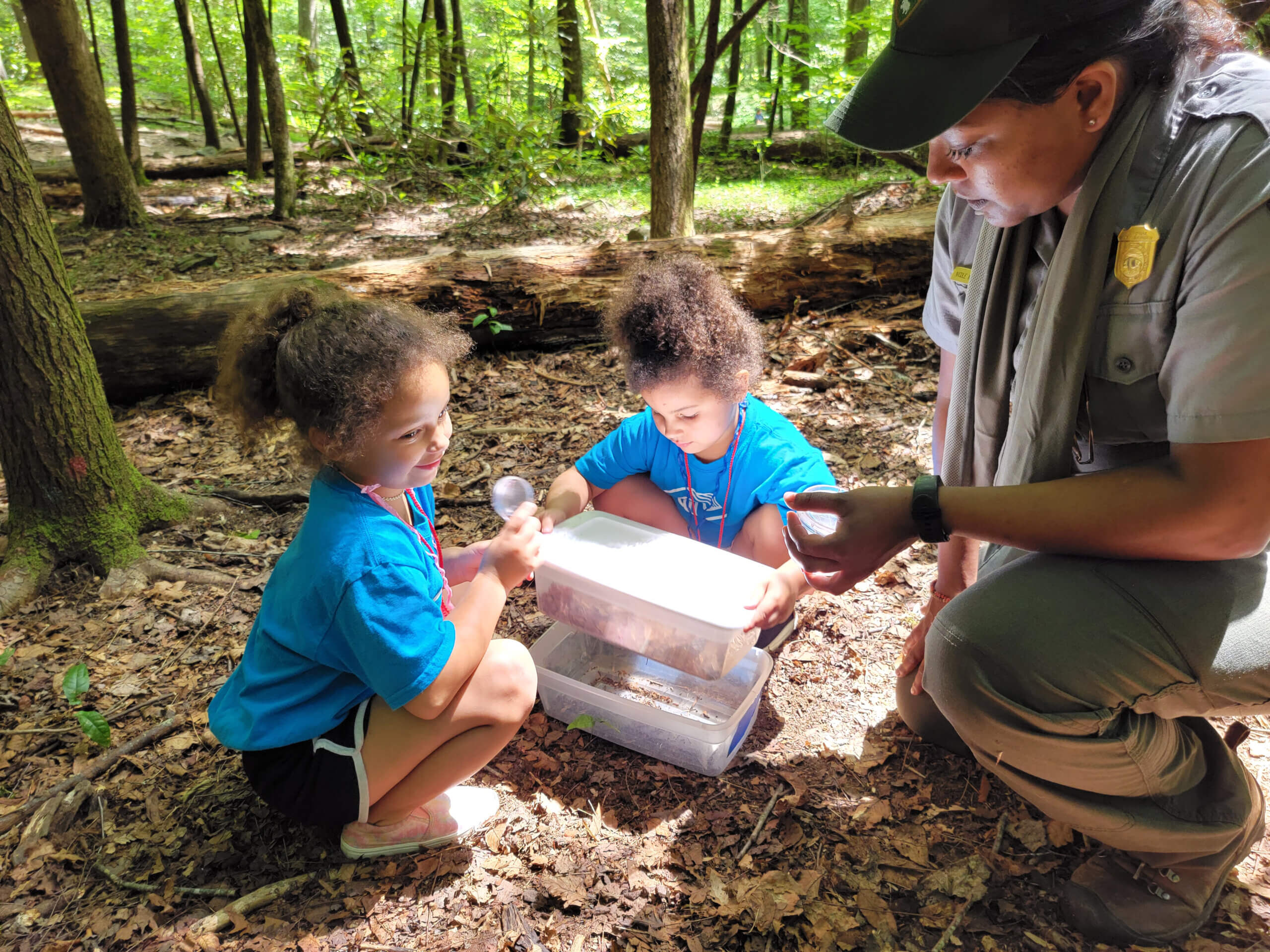by Julie Dodd
This summer hundreds of students from the Boys & Girls Clubs of the Tennessee Valley will explore Great Smoky Mountains National Park. For many of them, this will be their first visit to the park.
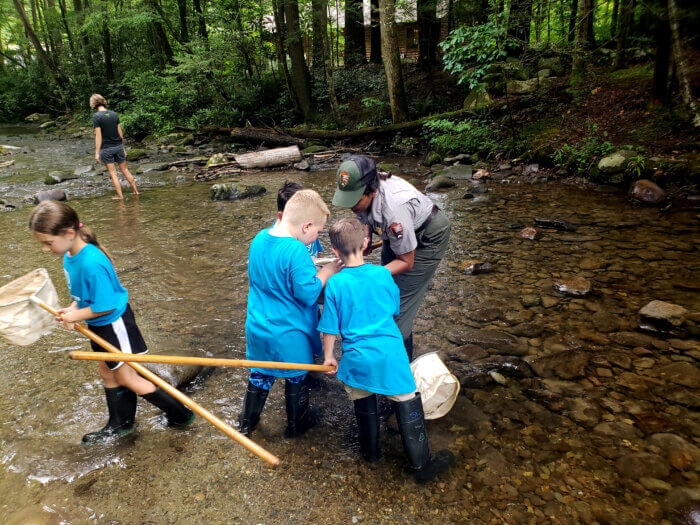
The program is supported by Great Smoky Mountains National Park, Boys & Girls Clubs staff and management, a grant from the National Environmental Education Fund (NEEF), and Friends of the Smokies (FOTS).
What the students enjoy about their time in the national park is as varied as the students themselves, said Ranger Jessie Snow Neeley, Tennessee Education Program Supervisor who helps coordinate the program.
As the students prepare to board the bus after their visit to the park, Neeley asks the students to form a circle and share their favorite thing about the park visit.
“One will say the hike. Another enjoyed sitting down at a table and drawing. Another liked touching bugs,” Neeley said. “The kids grab on to what resonates with them.”
A goal of the program is to introduce students to natural spaces and to help them feel comfortable in those areas. Neeley said the students in the Tennessee Valley Clubs – representing Anderson, Blount, Claiborne, Knox and Loudon counties – primarily are from urban settings and aren’t familiar with natural areas like the park.
Rangers build relationships with the children
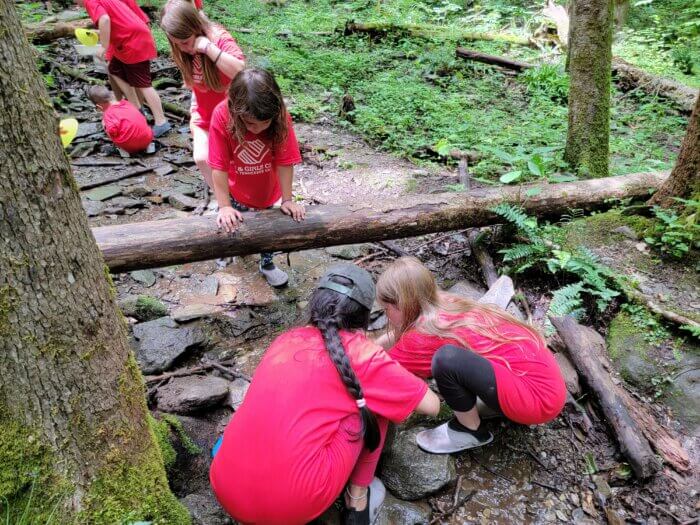
The process of the kids feeling comfortable in the park starts with rangers making club visits to the Boys & Girls Clubs before the students make trips to the park.
The rangers build relationships with the students and also lead activities, such as exploring the nature around the club’s location if that’s possible. Younger students may complete a coloring activity of a park scene or animal.
The rangers talk about what the park is like and share animal pelts and skulls. They also lead a conversation about what makes the students nervous about going to the park, as many of the students have never visited the Smokies.
“A student may say they’re afraid of seeing an alligator,” Neeley said. “We can reassure them that won’t happen unless they are visiting the Everglades National Park.”
Ranger Nicole Nadasen, coordinator and field lead for the program, added, “One of my favorite concerns is when they hear that this ‘park’ doesn’t have a swing set or a water slide. ‘What do you even do there?’ they ask. ‘There are just trees!’ Yet within minutes of unloading the bus they are in wonder and amazement, playing games, exploring, and connecting to nature.”
Barriers to visiting GSMNP
Even though the students live an hour to an hour-and-a-half from the park, many barriers prevent them from coming to the Smokies, Neeley said. Barriers include the cost of making the trip, transportation, as well as lack of comfort and familiarity with natural spaces.
Neeley said the program eliminates many of those barriers, including the lack of transportation. Friends of the Smokies provides bus transportation and also pays for backpacks and water bottles, keeping the kids comfortable and hydrated at a hot time of year.
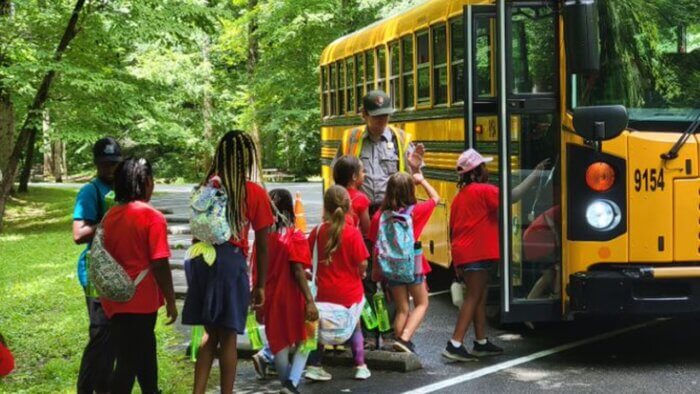
Park Visits
The park visits are held during June and July. The same rangers who made the club visits are at the park to meet the students when they arrive on the bus – providing a familiar face.
Some students only visit the park once during the summer. Most visit at least twice. The program includes grades K-12, so some students visit the park over a number of years. Many of these same students visit the park in the fall for a Knox County field trip. Neeley said the rangers get to build a long-standing relationship as the kids become more familiar with them and the park.
The park had 1,062 student visits from the Boys & Girls Clubs of the Tennessee Valley during the summer of 2023 – increasing from 301 visits in 2021. Neeley credits Nadasen with building participation. Nadasen works with the Boys & Girls Clubs leaders in addition to training the GSMNP staff involved in the program, scheduling the buses, and selecting the water bottles.
“The program has been enriching for our team, our local students, and our current and future community,” Nadasen said. “We get the opportunity to provide children an experience that introduces them to a lifetime of natural spaces and stewardship. I love seeing returning students and with each visit their love, respect, and ownership of the Smokies deepens.”
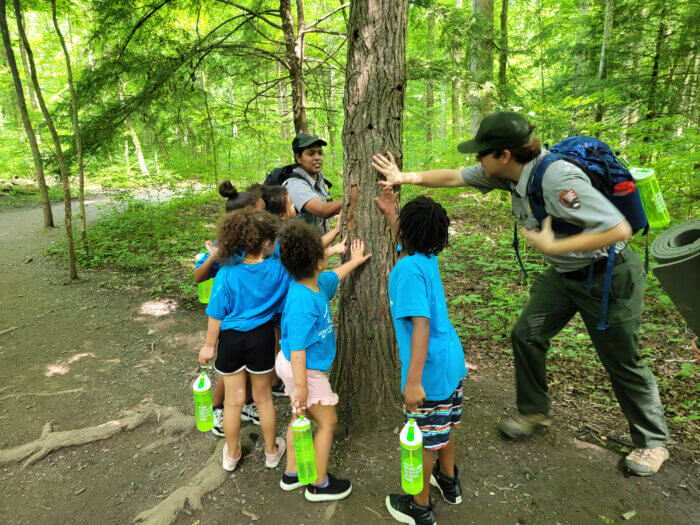
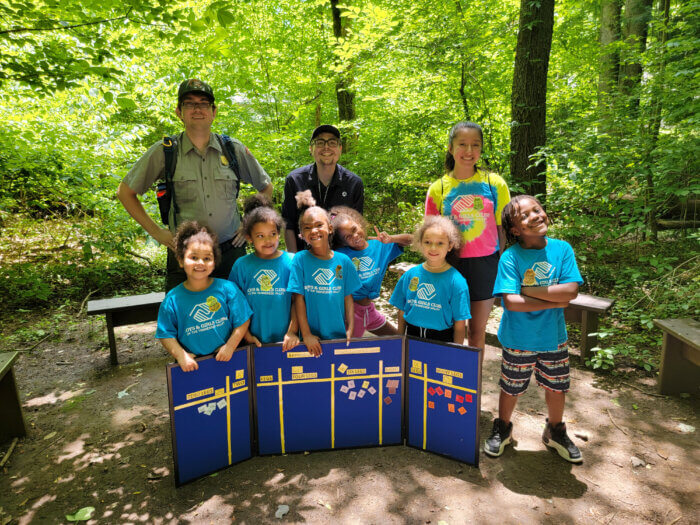
Stream Splashers
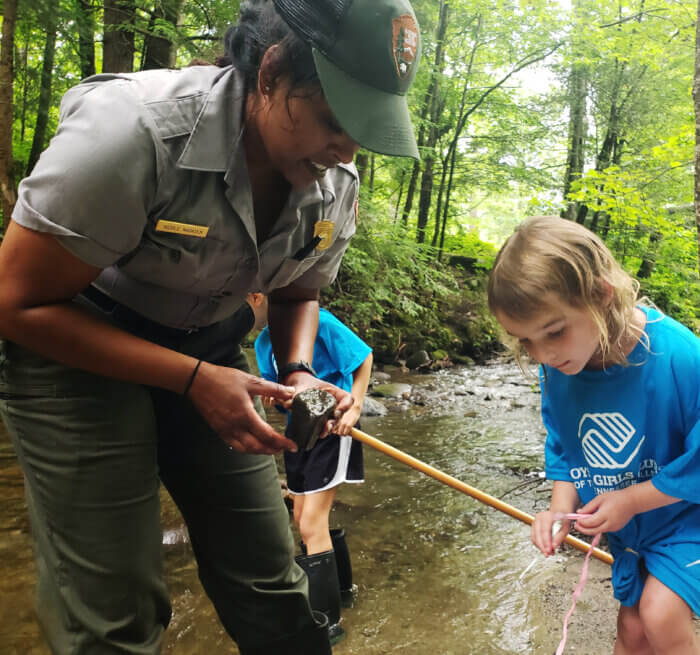
One of the favorite park activities for the students is “Stream Splashers,” a citizen science program where students learn how to analyze what is in the streams.
Neeley explained the activity starts by talking with the students about how the water in a stream in the Smokies is connected to the water coming out of the tap at home.
“We make it relatable,” Neeley said. “Everyone can connect with water as something we all need.”
Then the kids take off their shoes, put on water shoes, and get into the stream with nets.
“What they find indicates the watershed health,” Neeley said. “It’s always great to find mayfly and caddisfly larvae. These are sensitive species, so their presence suggests that the water in the park starts healthy as it flows out toward their communities and taps.”
Nadasen added, “Their findings evoke that ‘woah’ reaction of discovering a world within the water.”
The kids’ excitement about what they experience is what the rangers enjoy about the program, Neeley said.
“At the end of the day what unites us is that we love the kids and the park,” Neeley said. “There’s no better feeling than seeing kids who arrive at the park nervous and, by the end, they are bounding on their toes to tell us why they enjoy it and how they’ll take care of the park. Their eyes light up at seeing something new.”
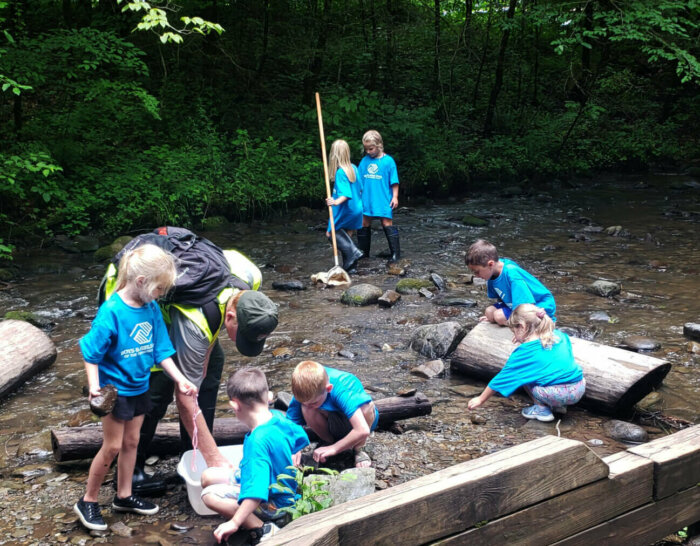
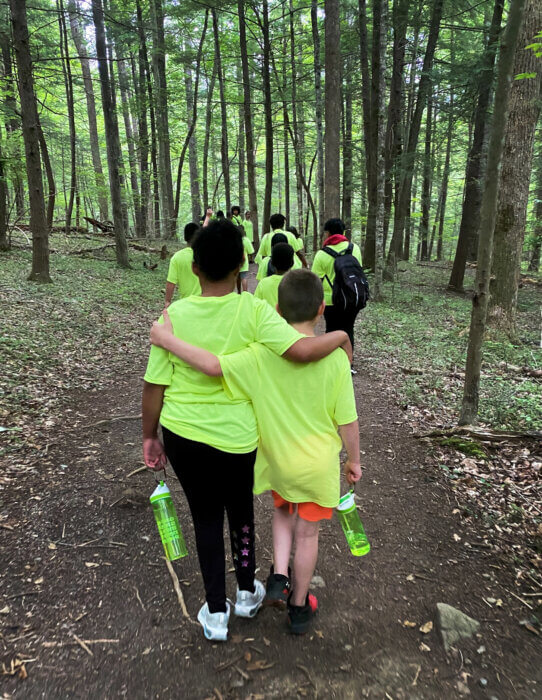
The park sponsors programs for K-12 students that serve about 30,000 students each year in North Carolina and Tennessee, including field trips during the summer and during the school year. The park also hosts teacher training workshops, serving between 200-300 teachers a year. Friends of the Smokies helps fund many of the park’s education programs.
